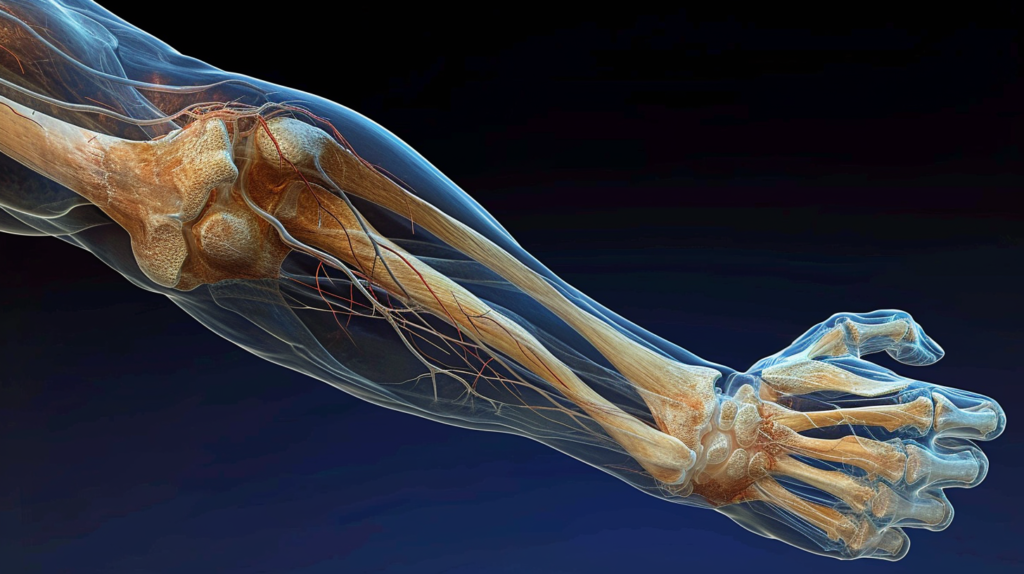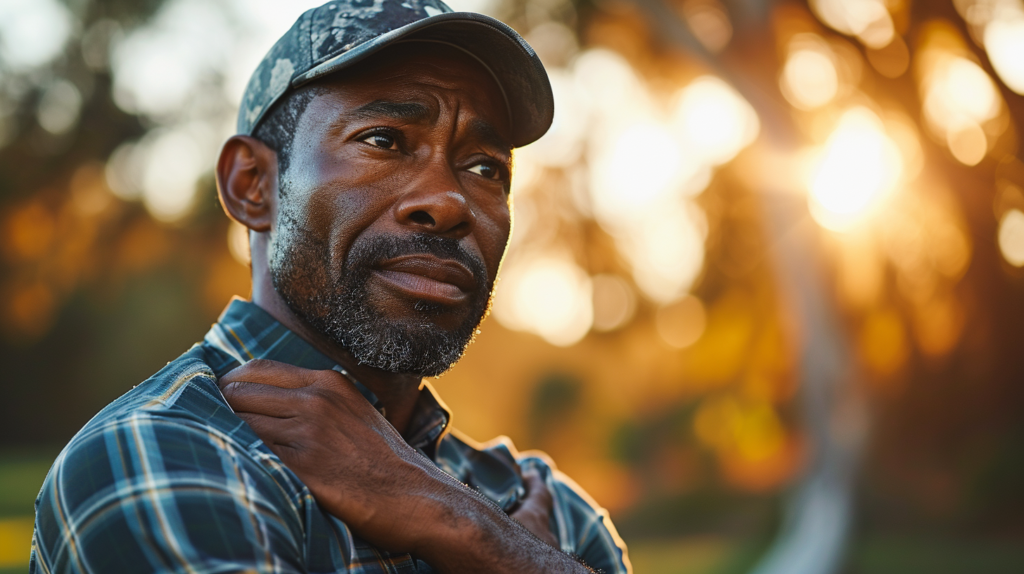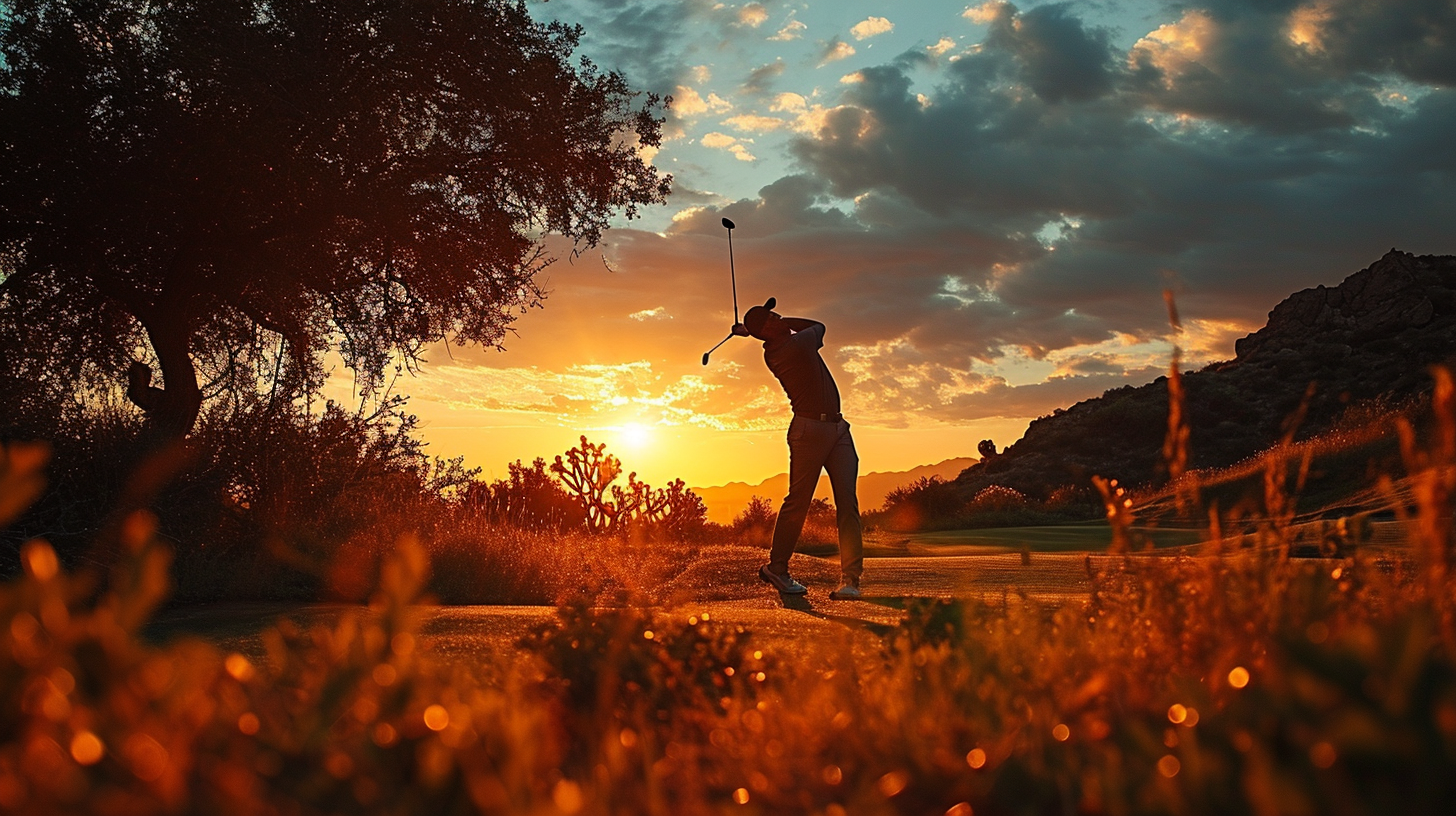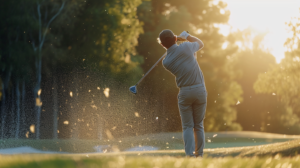If you’re an avid golfer who suddenly can’t make it through 18 holes without pain in your elbow, you may have a case of “golfer’s elbow”.
Golfer’s elbow, known medically as medial epicondylitis, is an overuse injury affecting the tendons connecting forearm muscles to the inner elbow.
Let’s dive in and explore the causes, symptoms, diagnosis and treatments for this common repetitive strain injury.
What is Golfer’s Elbow?

Golfer’s elbow, also known as medial epicondylitis, is defined as inflammation or strain of the tendons that attach the forearm muscles to the bony bump on the inside of the elbow called the medial epicondyle. It causes pain on the inner side of the elbow.
The condition gets its name from the fact that many golfers develop symptoms due to the repetitive and awkward motions that are integral to the golf swing.
However, the injury can happen to almost anyone who overuses the muscles and tendons of the forearm, such as assembly line workers, painters, plumbers or gardeners.
Causes of Golfer’s Elbow

There are several potential causes and risk factors for developing golfer’s elbow. The most common cause is overuse – placing excessive strain on the muscles and tendons of the forearm through repetitive motions and gripping activities.
Specific actions that can lead to golfer’s elbow include repeated wrist flexion and extension, gripping golf clubs or tennis rackets incorrectly, and improper swinging techniques that put extra stress on the inner elbow.
Occupations that require repetitive gripping, twisting, grasping and flexing hand movements also carry an increased risk.
Age is another contributing factor, as golfer’s elbow usually develops gradually over time in one’s 40s, 50s and 60s as the tendons lose elasticity from years of use. Prior injuries or existing elbow conditions make people more prone to golfer’s elbow as well.
Golfer’s Elbow Symptoms

The main symptoms associated with golfer’s elbow include:
Pain and tenderness focused on the inner side of the elbow and forearm. The pain often radiates down the inside of the forearm towards the wrist.
Stiffness, tightness and decreased range of motion in the elbow, wrist and forearm that is most noticeable after periods of inactivity. For example, upon waking in the morning.
A burning, aching or numb sensation along the inside of the forearm that progressively worsens with activity and certain motions.
Gripping objects and repetitive wrist flexing intensify the discomfort. General weakness and fatigue in the forearm muscles and hand that can make daily tasks involving grasping or twisting motions more challenging.
For some, the symptoms may come and go, while for others the pain is constant and disruptive to normal activity. Golfer’s elbow pain often gets worse over time if left untreated.
Diagnosing Golfer’s Elbow

Getting a proper diagnosis starts with an evaluation by a doctor, who will examine the arm and elbow through manipulation and range of motion checks. They will apply pressure along the common tender points to assess pain levels.
The doctor may order imaging tests like an X-ray or MRI scan to rule out bone spurs, arthritis or other elbow injuries that could be causing symptoms instead of golfer’s elbow.
Electromyography (EMG) and nerve conduction velocity (NCV) tests also help determine if there is any nerve damage underlying the condition as well.
Proper diagnosis is essential, as other elbow injuries like stress fractures require different treatment. Once medial epicondylitis is confirmed and other causes ruled out, customized treatment plans can be initiated.
Golfer’s Elbow Treatment

There are many conservative treatment approaches for relieving golfer’s elbow pain and inflammation while promoting healing:
Rest and Activity Modification: It is important to rest the affected elbow by avoiding any activities that aggravate the injury, especially repetitive gripping or wrist motions. Using an elbow brace can help immobilize the area during activity or sleep.
Modifying training techniques and correcting improper mechanics for the causative motions or sports is also beneficial.
Ice Packs: Applying ice packs to the tender inner elbow area for 10-15 minutes a few times per day can relieve localized inflammation and pain. It is most effective after activity or at end of day when swelling may be increased.
Over-the-Counter Medications: Anti-inflammatory medications like ibuprofen (Advil) or naproxen (Aleve) decrease swelling and assist healing. Acetaminophen (Tylenol) helps relieve elbow pain symptoms without reducing inflammation.
Oral steroids may provide more potent anti-inflammatory effects short term.
Braces and Straps: Specialized braces, straps or kinesiology tape worn just below the injured elbow help compress and support the area. This can improve stability and function for more comfortable activity with less pain.
Preventing over-stretching the tendons aids healing.
Physical Therapy: Specific stretches, exercises and modalities like ultrasound under the guidance of a physical therapist can relieve symptoms faster.
Strengthening the wrist, forearm and shoulder muscles helps better stabilize the elbow joint reducing strain on the injured tendons. Stretching also increases flexibility and range of motion.
Cortisone Injections: For more severe, chronic golfer’s elbow, one or more corticosteroid injections into the injured tendons decreases inflammation substantially providing temporary pain relief.
However, possible side effects include skin changes, infection or tendon weakening so usage is limited.
Surgery: If more conservative treatments tried over 6-12 months fail and functional debility persists, surgical options may be considered. Release or repair of the damaged tendons and debridement of scar tissue aims to reduce compression and facilitate healing.
Recovery lasts several months requiring extensive rehabilitation therapy.
Most mild to moderate cases of golfer’s elbow will resolve within 1-2 years using conservative self-care and medical treatments without needing surgery. Seeking early diagnosis optimizes outcomes.
Preventing Golfer’s Elbow

There are several effective ways to help prevent developing golfer’s elbow in the first place:
Use proper technique and biomechanics when performing causative activities like golfing or tennis – get professional instruction on positioning and gripping equipment to avoid overuse strain on the elbows and wrists.
Incorporate stretching and strengthening regimens for the forearms, wrists and elbows – this protects the joints and tendons from excessive loads during repetitive gripping motions.
Take frequent rest breaks during prolonged repetitive tasks to give elbows a chance to recover. Use cushioned vibration-dampening grips on golf clubs or tools like rackets, hammers and screwdrivers to absorb impact stress.
Ensure workstations and equipment are ergonomically adjusted like computer keyboards and assembly tools.
Wear an elbow brace or strap prophylactically if engaging in high risk activities where technique cannot be modified adequately.
Making wise training choices, using correct biomechanics, and allowing adequate rest periods all help keep elbow tendons healthy and less prone to painful overuse injuries like golfer’s elbow.
Conclusion
Golfer’s elbow is a common overuse injury, but it can be effectively managed and often prevented. Seeking early diagnosis and tailored conservative treatments aimed at reducing inflammation and strengthening tissues facilitates recovery in 1-2 years for most patients.
Learning proper mechanics for causative motions and allowing rest periods helps keep elbows healthy. When caught early, surgery can usually be avoided with consistent rehab and activity modification.



